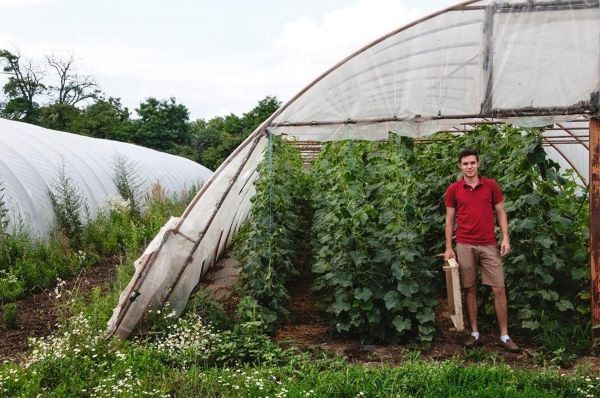
BIO Paprika-Rarität "Mavras"
ca. 200 gca.
More info
Delivery to your door
AI Summary
Xtra price:
€1.62
We source locally for the freshest groceries you can trust.
- Description
- Composition
- Similar products
- More from this brand
- Recipes
Paprika grows on a 30-100 cm high bush. The fruits, "paprika pods", come in many shapes, colors and sizes. The round or blocky to elongated narrow and pointed pods reach fist size and weigh up to 250 g. The smooth, shiny skin can be red, yellow, green, but also orange, white, purple and black. Inside are fruit chambers and seeds. Paprika tastes crispy-fresh and mildly spicy.
Origin
The paprika plant is native to the tropics of South and Central America. Spanish conquerors brought it from there to Europe in the 16th century, where it was initially grown only as an ornamental plant and only later as a vegetable. Today it is cultivated in numerous countries, including Italy, France, Spain, Greece, Turkey, Hungary, Israel and in many African, Asian, Central and South American countries. Paprika is now also an integral part of the vegetable range in Germany. Paprika is available all year round, most strongly from summer to late autumn, especially from Spain, Italy, Hungary, Turkey and the Netherlands.
Main varieties
The distinction between vegetable and spice paprika (peppers, Spanish pepper) is based on the taste or the content of the alkaloid capsaicin, which is much more present in the latter. Spice paprika usually forms pointed pods up to 15 cm long. The flesh is firmer and thicker, hot to very hot (depending on the capsaicin content) and spicy. The small chili peppers are particularly fiery. Another type of paprika besides vegetable and spice paprika is the tomato paprika, which was bred in Hungary a hundred years ago and could be considered a cross between vegetable paprika and tomato. The fruit walls of the tomato paprika are fleshy and juicy. The fruit tastes sharper than vegetable paprika, but much sweeter. This type of paprika is eaten like tomatoes or other peppers.
Tips
When shopping, make sure that the fruits are firm, smooth and shiny. Wrinkles and spots indicate too long storage with loss of vitamins and aroma. Paprika tastes particularly fine when peeled (for this purpose, briefly pour boiling water over it).
Preparation
Wash the fruits, cut them open, remove the stem, the inner partitions and the seeds and use the pods as desired. Paprika is eaten raw, as a salad, stewed or cooked, on its own or together with other vegetables as a warm vegetable, stew or as sauerkraut. Peppers with rice/meat fillings are very popular.
About the producer
Our organic farm is located in the heart of the Seewinkel, on the eastern shore of Lake Neusiedl in the Pannonian lowlands. As the western part of the Hungarian lowlands, the Seewinkel is a special place in Austria due to its very special climate. Hot summers and cold winters, combined with little precipitation and the most sunshine hours, give this region a lot of potential.

The Pölzer organic farm has been producing organically since 2007, which means that the recycling idea is in the foreground when using our own horse manure. Vegetable cultivation now has an enormous variety of old vegetable types and varieties. From tomatoes in all possible colors and shapes to exotics such as physalis, artichokes etc. with well over 100 varieties, you will find every imaginable fruit vegetable in summer on our farm.
What is special about our company is that almost everything from the seed to the finished product is created on the farm by hand, with great love and care. Family members from three generations help out together. In our actions and creations, we always try to combine tradition, innovation and sustainability for a clean future.

Storage recommendation
Paprika is best stored at a temperature of 5–10° C, preferably not in the refrigerator
